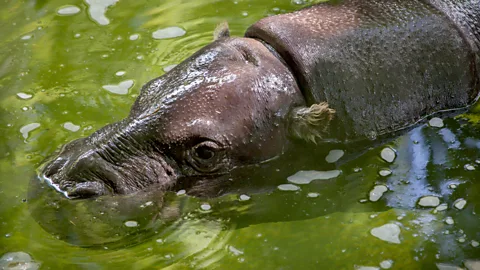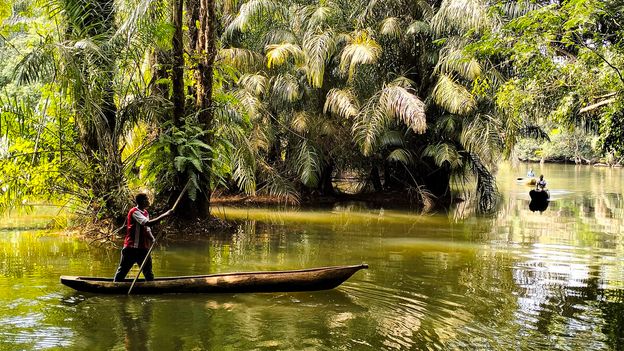Tiwai, meaning “Big Island” in the Mende language, is just 11.9 sq km, yet it shelters pygmy hippos, endangered chimpanzees and some of the world’s densest primate populations. Its recent Unesco recognition marks an exciting new chapter for Sierra Leone.
The journey to Sierra Leone’s first Unesco World Heritage Site is an intrepid one. From the capital, Freetown, travellers trace 240km of tarmac highway before bumping along hours of rust-red, potholed roads to the banks of the Moa River. From there, a dugout canoe ferries them to Tiwai Island and the Gola Rainforest National Park, which is part of the new Unesco inscription. These crossings often take place by torchlight, in the pitch-dark of night.
Visitors are rewarded for their efforts, though. Ensconced in a clearing, among liana vines, javelin-like lengths of bamboo and 12m-tall piptadeniastrum trees, lies a remote wilderness camp where visitors can stay overnight, off-grid.
The camp is an uncomplicated place: a handful of mesh-sided wooden huts containing mosquito net-veiled beds, a bandstand-style communal area for eating and a rustic shower block. Yet people do not come here for home comforts. They visit to stay in an otherwise impenetrable part of the ancient West African rainforest where they can experience the symphonic soundtrack of the jungle at night.
“I remember lying in bed and listening to the cacophony of sounds going off around me,” said Bea Meitiner, who spent two nights on the island in 2022. “One night, I woke to the sound of something moving right outside my tent. I froze, my heart was racing, I imagined I was about to be eaten by some predator. The next morning, we spotted the footprints of a pygmy hippo right next to camp. To think such a secretive, rare animal had wandered past while I lay there. It was both terrifying in the moment and magical in hindsight.”

